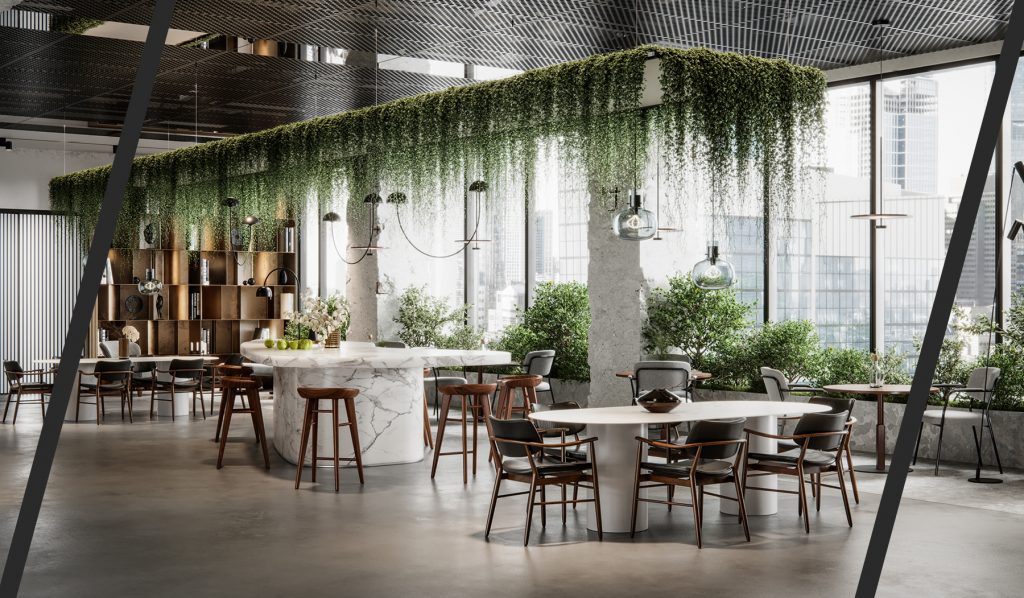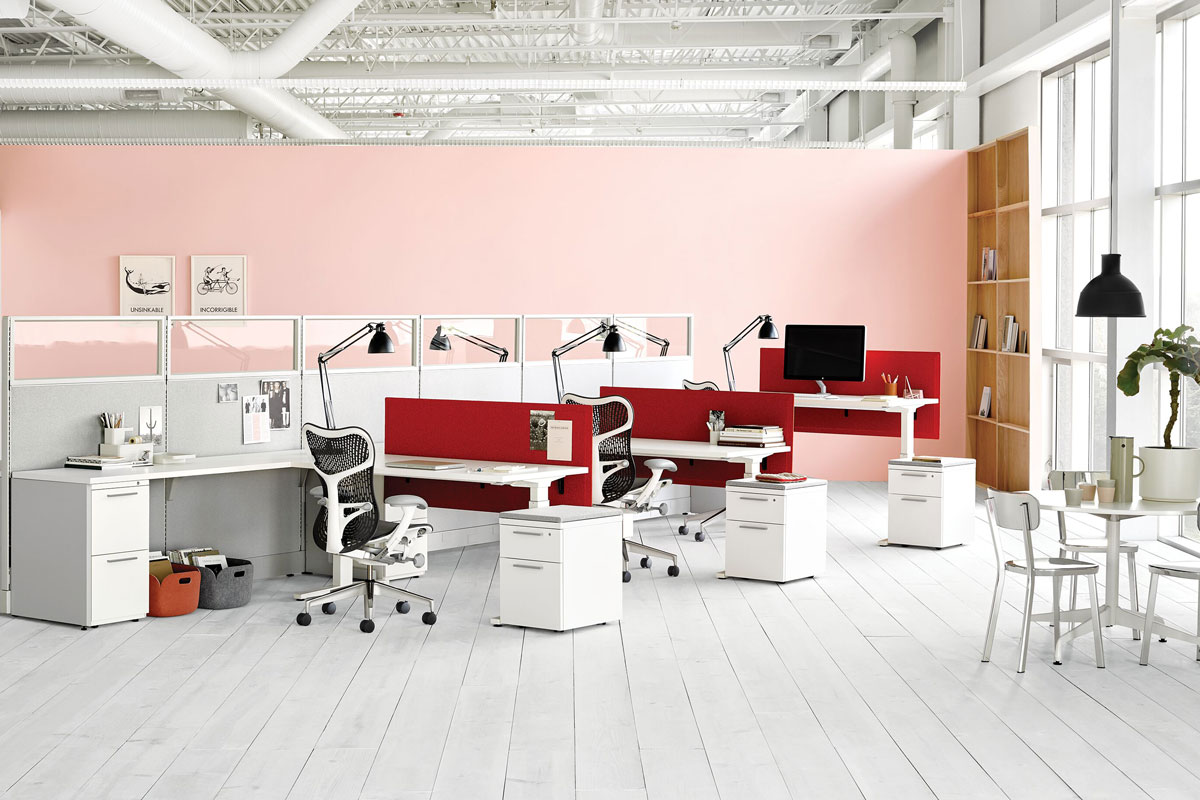One hundred years ago, if you worked in an office, you likely would have been crammed into a large room, sitting shoulder to shoulder with your colleagues in endless rows of desks. Designed to maximise productivity, these offices made it easy for managers to supervise staff, but were terrible for morale.
By the 1960s, offices had evolved into a cubicle layout, giving team members small private areas within a larger office space. These three-walled cubicles were intended to create a more personalised experience in the workplace, while still allowing people to converse with colleagues. Unfortunately, this had quite the opposite effect, compartmentalising workers and discouraging interaction.
Today, as technology drives greater autonomy, the office exists to better serve team members’ needs as businesses increasingly realise the value in employee satisfaction.
“Company leaders are in the midst of reimagining their use of physical office spaces and digital infrastructures in ways that will allow them to satisfy employee preferences and compete for top talent,” says Eric Anicich, Assistant Professor of Management and Organisation at the University of Southern California.
Since the pandemic, which prompted flexible work arrangements, the function of the office has also shifted to provide more of the experiences we rarely encounter at home – connection, engagement and collaboration, all of which are key elements in creating an inclusive workplace.
Although designing for inclusion may not be the easiest nor the quickest task, it is certainly worth the effort for a variety of reasons. “At the team level, inclusive environments foster the exchange of a wide variety of perspectives and ideas, which can improve decision-making and creativity,” Anicich explains.
Rethinking the open-plan office

The inclusive workplace is broadly defined as one in which all employees feel empowered to fully engage and thrive within the organisation. In terms of design, company leaders can leverage the layout of desks, common areas and entrances to encourage interactions among team members from diverse backgrounds.
While an open-plan office design is often the go-to strategy to facilitate inclusion, results from a 2018 study at a Fortune 500 company found that 72 per cent of employees spent less time interacting following a shift from an enclosed to an open-plan office setting.
“At the team level, inclusive environments foster the exchange of a wide variety of perspectives and ideas, which can improve decision-making and creativity.” – Eric Anicich, Assistant Professor of Management and Organisation, University of Southern California
“We are learning that the open office did just the opposite, causing people to isolate themselves due to overwhelming distractions and communicate less,” explains Sergio Lechuga, Design Principal for Interiors at HMC Architects.
“We need to challenge ourselves, and our clients, to rethink how we can provide choice and flexibility in a multitude of spaces and settings to foster the greatest amount of collaboration and communication, while also providing privacy and areas for concentration,” Lechuga says.
The future workplace

One of the key ways companies can design for inclusion is by creating spaces where people can attend to their personal needs, which communicates to employees that the company they work for is concerned for the whole person, not just their output.
“Companies that provide ‘non-work’ related spaces such as quiet rooms for meditation or prayer, lactation rooms for nursing mothers, gender-neutral restrooms, a gym/yoga room with free equipment, or even a small outdoor garden space, are perceived to have greater concern for the welfare and wellbeing of their employees, improving employee morale and ultimately financial growth,” Lechuga says.
For Anette Bjerring Gammelgård from the award-winning Scandinavian architectural firm AART Architects, the provision of shared facilities in the workplace appeals in particular to younger generations, who are more spontaneous in how they structure their time. She believes the future workplace will be more akin to a community where employees have access to the facilities they need in order to be able to thrive at work.
In a similar vein Jennifer Herr, Senior Interior Designer at US-based Eppstein Uhen Architects, encourages companies to design a mixed-type office setting that caters to a variety of work and non-work related activities.
“Removing or reducing physical barriers such as walls that divide or separate departments or zones, eliminating private offices and creating opportunities such as shared collaboration zones or a communal break room for chance encounters help in fostering communication and collaboration.” – Sergio Lechuga, Design Principal for Interiors, HMC Architects
“During the course of the day, no matter what your role is, you might need two hours of just heads-down focus time and then you might need to meet with someone which would require a different type of setting, like meeting in a conference room,” she says.
“And then there’s the socialisation aspect of things, where maybe you go to the break room and grab a cup of coffee and you run into a colleague there and you both talk about your plans for the weekend. And that’s also important because that actually helps build trust among employees.”
Designing for unplanned encounters

One of the biggest advantages that can be gained from working at the office is the direct exchange of ideas that occurs quite naturally as we go about our day. For many of us, remote work entails a very structured experience, even when using collaboration tools such as Zoom.
Peter Ippolito, Managing Director of International design studio Ippolito Fleitz Group, believes that good office design needs to allow for both planned and unplanned encounters, and should in fact enhance those chance moments.
“It’s like where you meet people by chance and just get to talk and suddenly there’s a new idea, right? It is meeting somebody in the hallway and having a small chat,” he says.
Whether you purposefully create more intersections, lounge areas or cafeterias as informal touchpoints, it’s important for companies to align their office design with the company culture and its employees.
“Removing or reducing physical barriers such as walls that divide or separate departments or zones, eliminating private offices and creating opportunities such as shared collaboration zones or a communal break room for chance encounters help in fostering communication and collaboration,” Lechuga says.
Read next: Easy ways leaders can create a stress-free and productive workplace



